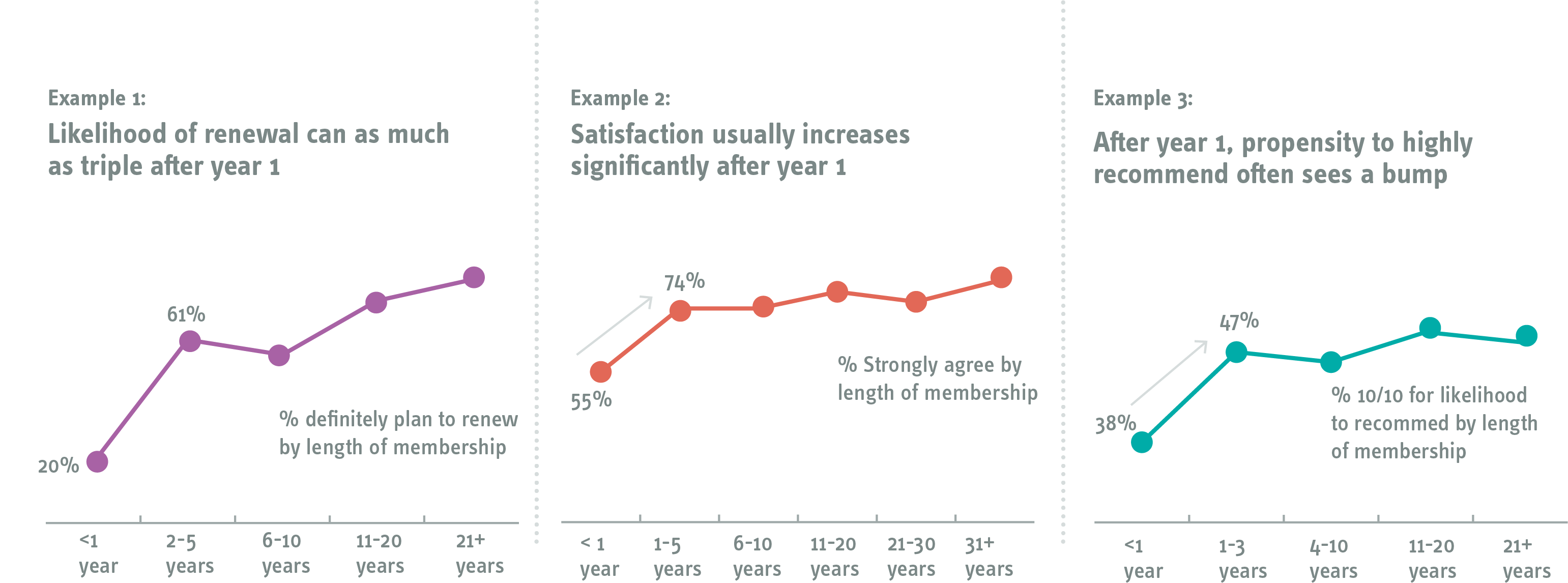- What We Do
- Understanding your audience
- Engaging new audiences
- Designing experiences
- Building loyalty
Membership: the crucial first year
Membership is evolving
There are fewer hotter topics for cultural and non-profit organisations right now than membership. We’ve seen increasing focus on membership over the past 5-10 years as institutions look to be less reliant on state funding, individual donors and sponsors. Building a wider community of support through membership can be a more predictable and therefore sustainable mode of revenue generation than individual giving. Then the pandemic created further tension – cultural institutions relied more than ever on financial support while not being able to offer the main incentive to become a Member – physical access. As the recent Cuseum report rightly points out, the sector was fleet of foot to provide this access digitally.
Institutions each face unique challenges
Over the past year we’ve worked with a range of clients on projects surrounding membership all trying to answer different questions to inform different kinds of decision-making. Membership doesn’t exist in isolation – it’s part of the wider context of the institution’s challenges and priorities. We’ve explored:
- How can we increase loyalty and frequency?
- How can we really build community amongst our membership?
- How can we reduce the time and effort required to run our membership without compromising satisfaction?
- What’s the role of digital benefits in the future?
- How has Covid changed perceptions of membership value
But one thing seems to be consistently true
Across this wide range of organisations and objectives, the outcomes are always different. Motivations for joining, benefits valued, level of emotional connection, are intrinsically linked to the brand, the offer, the membership model. But there is one fundamental truth: Year 1 is critical.
We’ve included some real but anonymized example data points below, pulled from different studies. All three show the dramatic change in relationship after year 1. The graphics show trends we saw often: where likelihood to renew, overall satisfaction and propensity to recommend all increased over time (as expected) but the greatest jump came between year 1 and year 2, then flattened out.

Membership dashboard
Some of this is, of course, natural. Members who aren’t satisfied are bound to drop off, and it makes sense that a stronger connection would develop in longer-term relationships. But what if we could do more to influence that – find ways to develop the relationship faster? Get them accessing our benefits (physical and digital, transactional and emotional) sooner and more frequently?
For those working in membership this is not news. It’s a truth that hasn’t changed, and won’t change. But as more and more organisations look to membership as a solution to the financial crisis, creating heightened competition (even Netflix is losing subscribers), we’d advocate the value of redoubling the energy devoted to first year members.
Focusing effort on the greatest return
We know that cultural institutions are constantly making tough decisions on effort vs reward. Resources are always limited – we need to choose wisely. Spending time stewarding long-term high-level donors, or persuading hot prospects to upgrade, seems like a given. But what about those year 1 Members? Now is a great time to reflect on the membership journey and particularly consider how year 1 touchpoints could be tweaked or tuned to build stronger connection with new members. Even marginal increases in year 1 retention can tip the ROI calculation further in your favour.
Read the follow up article that highlights some great examples of year 1 stewarding.
- Engaging new audiences
- Understanding your audience
